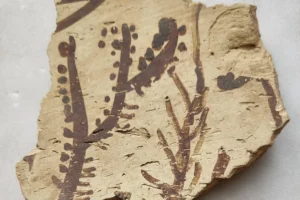
From Judeo-Shirazi to Jewish Neo-Aramaic, there’s a wide and rich range of Jewish languages, ethnolects, and dialects beyond Hebrew — many of which have been spoken for over a thousand years. These languages reflect the journeys of Jewish communities across continents and centuries, preserving traces of the societies they lived in and the cultures they helped shape.
While many of these Jewish languages are endangered or even classified as extinct, some are still alive, thriving, and even experiencing revival in recent years. Jewish languages have much to offer: they provide insights into communities and how they lived, revealing how Jews interacted with surrounding cultures and adapted foreign words to their own needs.
Their influence extends far beyond the Jewish world. Several Jewish languages have contributed everyday vocabulary to other languages: modern-day Hebrew, English, German, Czech, Spanish, and other languages all have some words that have been borrowed from other Jewish languages, from šoufl to Schlamassel to chutzpah.
How can someone in the 21st century engage with and bring awareness to these rich and wonderful languages so that they aren’t lost to the annals of history? Let’s unpack it.
Learning the language
Whether you’re fully committed to attaining fluency or just curious about the vocabulary and sentence structure, learning a Jewish language can be one of the most meaningful ways to connect with the culture and community from which it emerged.
If there was a Jewish language or ethnolect spoken by your family in the past, like Bukharian among Jews from Uzbekistan, that personal connection can be a motivator to begin learning that particular language. Another approach is to consider your existing linguistic background. If you are already familiar with or fluent in languages such as Spanish, Polish, or Arabic, you might find it easier and more intuitive to learn a Jewish language that has linguistic connections. For instance, if you learned Italian in university, you might consider exploring Judeo-Italian; Farsi speakers might gravitate toward Judeo-Persian.
When it comes to the better-resourced Jewish languages such as Ladino and Yiddish, learning opportunities range from university courses, online programs, summer intensives, and individual tutoring, to explorative language opportunities like Yiddish Farm and language-learning tours in Europe..
For lesser-known or nearly extinct dialects, such as Judeo-Malayalam or Judeo-Amazigh (also known as Berber), it can be more of a challenge to grasp even the basics, as there are far fewer resources and very few fluent speakers are still living. Still, reaching out to academic scholars, linguistic institutes, and heritage organizations that represent these Jewish communities can open doors to valuable materials, mentorship, and even community initiatives dedicated to preservation.
Engaging with musical traditions
If you’re a music junkie or even just casually interested in delving into something a little different than your usual playlists, exploring songs recorded in Jewish languages from around the world is an auditory journey that sheds light on a community’s culture. Each melody carries traces of the community that created it, offering a glimpse into the fusion of Jewish tradition with the surrounding cultures of the diaspora.
Traditional Sephardic and Mizrahi music, for instance, often features lyrics in Ladino, Judeo-Arabic, or Judeo-Greek. These songs are typically accompanied by instruments from their respective regions, like the kanun, oud, or the saz, blending Jewish storytelling with the rhythms of the Mediterranean, North Africa, and the Middle East. One of the most beloved Ladino songs is “Ocho Kandelikas,” a joyful Hanukkah tune written in 1983 by Bosnian-born composer Flory Jogoda, which has even been covered by Broadway star Idina Menzel. You might enjoy Jewish songs from Mumbai, India, from the 1930s, in which musicians sang in Judeo-Marathi, or sacred Ethiopian Jewish liturgy performed in Ge’ez, the ancient language of Beta Israel.
When it comes to contemporary Jewish music, the most active non-Hebrew Jewish language is undoubtedly Yiddish. From classic klezmer bands to experimental fusion musicians, Yiddish-language singers can be found worldwide. Klezmer is a traditional celebration and wedding musical style among Ashkenazi Jews, incorporating traditions from other communities and regions such as the Romani and Slavs. Some notable klezmer bands and artists to check out include Amsterdam Klezmer Band, The Klezmatics, and Alicia Svigals.
Baby names
Choosing a name from a Jewish language or ethnolect for your new baby can be a deeply meaningful way to honor their heritage and ancestry. If you’re searching for a beautiful Jewish name for your child, it’s a perfect excuse to do a little genealogical deep dive for name inspiration.
Traditionally, many Yiddish-speaking Jews, in addition to their secular name, carried both a Hebrew name as well as a Yiddish name. If your ancestors were Yiddish speakers, it may be worth trying to find out what their Yiddish names were, especially since these often held affectionate or symbolic meanings. Even after immigrating to places like the United States and Canada in the early 20th century, many Jews continued this particular tradition, balancing Old World names with their new surroundings.
For example, a boy given the name Herman would also receive a Yiddish equivalent like Haim or Herschel. For Jewish families with roots in countries such as India, Italy, or Greece, it can be a great opportunity to find some stunning family names that derive from their Jewish languages as well: perhaps Liaco (Judeo-Italian) for a boy, or Palomba (Ladino) for a girl? Even without a particular familial connection, opting to use a name from a Jewish language or ethnolect is still a way to honor Jewish communities and traditions throughout history. It also allows for the names to continue on to the next generation and be used by friends and family.
Delving into regional history
Every language has elements that reflect the culture and geography that shaped it. You can make learning a Jewish language even more meaningful by learning about the region that it originates from. By understanding the history, cuisine, and daily life of these communities, the language begins to feel less abstract and more alive.
Here’s a fun example: in Yiddish, the word schmaltz means goose fat, but can also refer to something being overly sentimental (schmaltzy). When reading up about regional Jewish cuisine in Central and Eastern Europe, it’s apparent how schmaltz was a staple part of the culinary traditions, allowing it to take on other meanings in everyday life. This shift in meaning reveals how language mirrors life: when goose fat became synonymous with richness and abundance in Jewish kitchens, the word itself took on emotional weight.
In this photograph taken on December 8, 2019, 30 year-old Can Evrensel Rodrik who was taught Judeo-Spanish when he was a child by his grandmother, shows a book written in Judeo-Spanish during an interview with AFP in Istanbul. (Photo by OZAN KOSE/AFP via Getty Images)
Books, documentaries, podcasts, and lectures can provide valuable context about Jewish life in parts of the world like Tajikistan, Yemen, and France, where various Jewish languages and ethnolects once flourished.
If it’s feasible, consider traveling to the regions where the languages originated (and in some cases, are still spoken today). Walking the streets, hearing the local sounds, and visiting old synagogues or markets can give you an added sense of connection. Your travels can provide additional context to anything from particular vocabulary words to regional accents. In many Jewish languages, even some of the smaller ones, specific regionalisms were common and distinguishable, like in many major world languages today. Recognizing these distinctions deepens your appreciation for how dynamic and adaptable Jewish life has always been.
Gut glik — “good luck” in Yiddish — on your linguistic journey!





